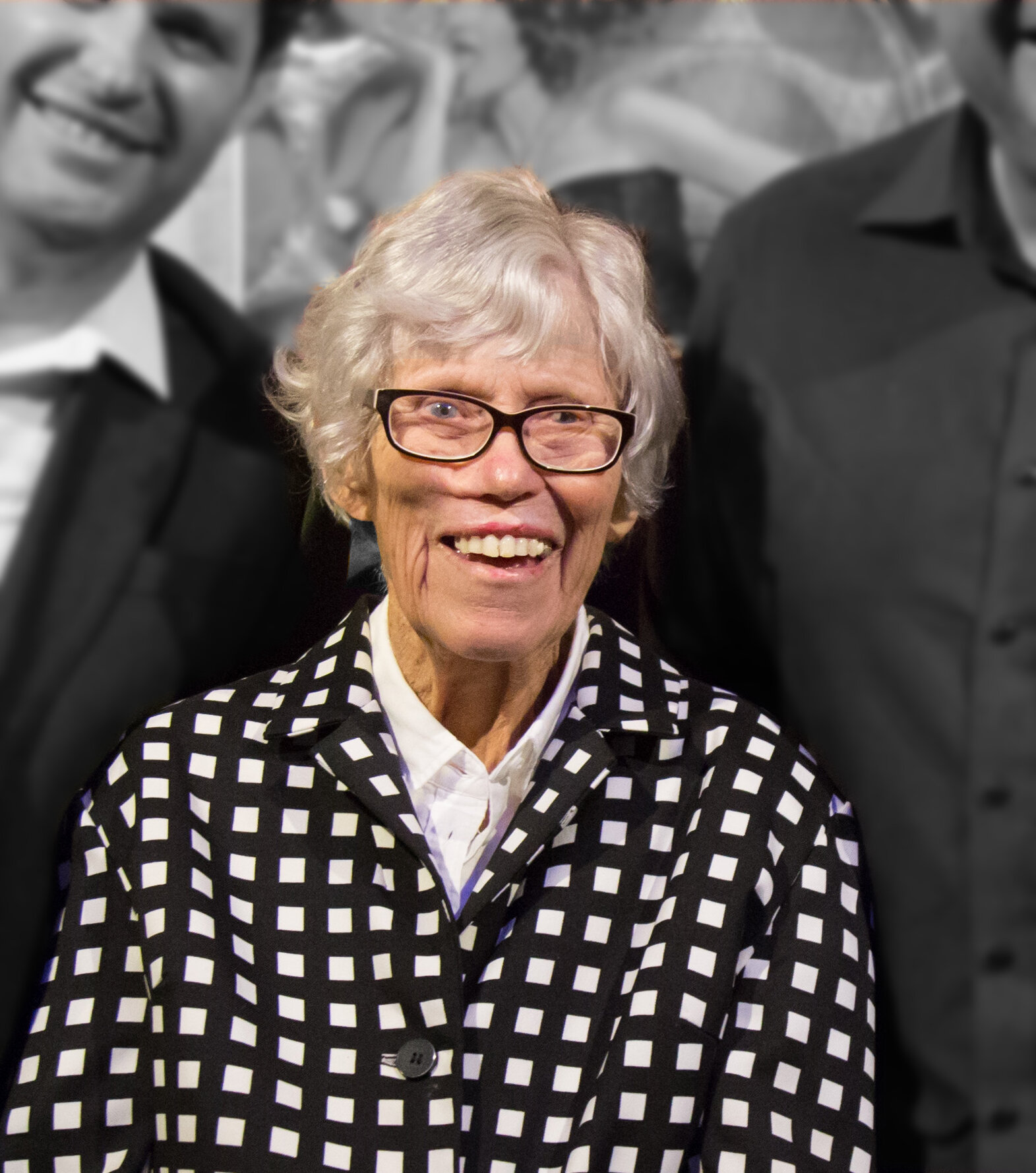ELIZABETH ANN (BETH) WILSON
(1934–2019 )
Following the completion of a science degree at the University of Queensland with a major in botany in 1954, Beth was employed by the Queensland Department of Agriculture and Stock in the Plant Pathology section. Her Grand Tour involved working in a variety of jobs, including supply teaching in London and a plant nursery hand in Vancouver, Canada.
On returning to Brisbane, she returned to the Plant Pathology section of the Department of Agriculture and married Blair Wilson, an architect, who was the third generation of his family to be included in the continuous architectural practice commenced by Alex B Wilson in Brisbane in 1884.
Following the birth of three sons, she was alerted to the proposed commencement of a new post graduate course in Landscape Architecture at the then Queensland Institute of Technology. The progenitor was Malcolm Bunzli, a Queensland Architect who had completed his post graduate landscape degree in England. Beth enrolled in the first established course in Queensland in 1966 which attracted 17 people, 15 practicing architects and included 3 women.
Her thesis topic, Ground Covers, included developing experimental plots to investigate the effect of various mulch types on plant growth and soil condition. She was accompanied to the plots by a new daughter, born during the years of balancing part time study with the demands of a young family.
Landscape Architect
In 1970 Beth joined the architectural practice of her husband Blair (then Blair M Wilson and Associates) and commenced the provision of landscape architectural services to the firm and independently to a number of other architectural practices.
Due to these associations the direction of the landscape practice tended towards landscape associated with buildings precincts. Recognition came with the first National Award in 1988, being for the development of Cathedral Square, visually connected to the newly completed St Johns Cathedral, a one hectare inner city precinct developed over 2 floors of underground car parking. This project was considered the be ground breaking, creating systems for drainage, formulae for lightweight soils, and the relocation of advanced trees including a 100 year old Ficus virens saved from a nearby redevelopment site.
Another large project commission at that time was the four million dollar refurbishment of the City Botanic Gardens for the Brisbane City Council.
Projects have included university sites in Brisbane, Gatton, Ipswich, Gold Coast, Townsville, Sydney; major hospitals and school precincts; heritage places, houses, parks and gardens, conservation master plans and interior landscapes.
Landscape embedded into architecture
Beth pioneered the introduction of landscapes as part of interior architecture partly due to her depth of knowledge in botany and the selection of plants in controlled or modified environments and partly due to her interest in Phytoremediation and the use of interior plant material in the promotion of healthy buildings.
Three major interior projects included:
Powerlink (Qld), which entailed the transformation of a former Queensland Rail workshops into open planned offices around a 400m2 planted air-conditioned atrium – (this project was the recipient of AILA National Award 1998 Landscape Building Context);
Resource Centre at the University of Queensland’s Ipswich Campus, where the establishment of a large internal garden created a legibility of all the various parts of the multifunctional building and sponsored quality of internal conditioned air which is unequalled for a building with such intensive use of electronic equipment; EcoSciences Precinct landscape at Boggo Road where all the internal planting is represented by local Australian flora.
Translational Research Institute where a memorable landscaped room contributes to the identity and workplace environment while adding significant interactive space to the network of communal places on the Princess Alexandra Hospital campus. The inspiration for the furnishing of the outdoor room with plants was derived from the proposed functional use, internal and external views and the desire to promote scientific intent within the building’s community. Beth focused on utilizing plants which include gymnosperms as representative of phanerogams and feature cycad, Norfolk Raintree and kauri pines and a thicket of the living fossil Wollemi pines. Plantings of the living fossil Wollemi pines contributes to the global conservation effort of this threatened species.
Teaching & Advocacy
Beth was an inaugural member of the Australian Garden History Society and was also a lecturer in History of Landscape Architecture at QUT Built Environment course where she taught both landscape architectural and architectural students in the 1980s & 1990s.
Hamilton, her son and current managing director of Wilson Architects recalls, as an architectural student, lectures where she could cover the complete history of landscape in a hour covering everything from Mesopotamian paradise gardens to the introduction of landscape design to Australian architecture without notes. The importance of understanding the context of history was critical in the design of contemporary landscaped places.
Beth frequently presented to numerous groups on the topic of Landscape with Architecture in Brisbane and developed a collection of early landscape publications as well as material to promote the work of early contributors to the development of landscape in Queensland.
Recognition
In 2015, Beth was awarded an Honorary Fellowship from the Australian Institute of Architect’s Queensland Chapter.
Chapter President, Richard Kirk said, “This is the first time a landscape architect has received this award, which is testament to Beth Wilson’s ground-breaking contribution to Queensland’s natural and built environment over the last 50 years.“





